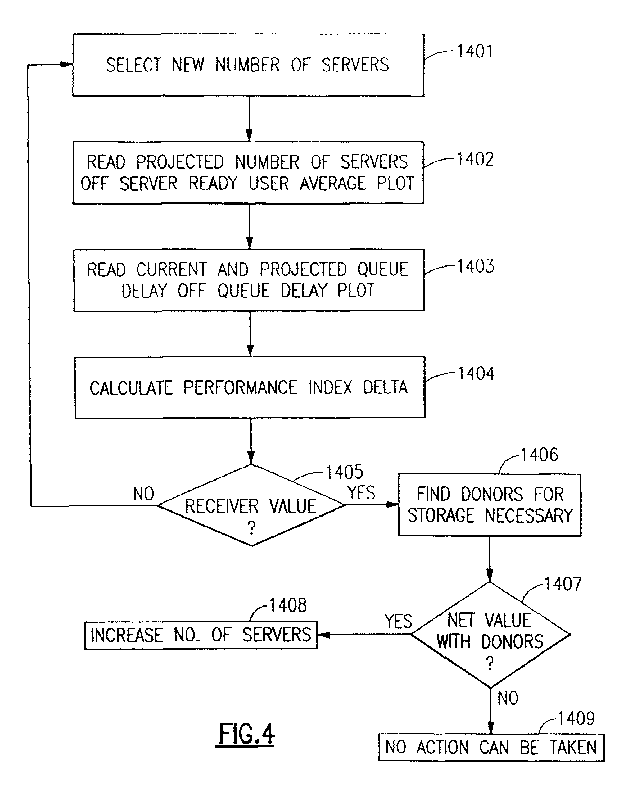(57) A method and apparatus for controlling the number of servers in a multisystem cluster.
Incoming work requests are organized into service classes, each of which has a queue
serviced by servers across the cluster. Each service class has defined for it a local
performance index for each particular system of the cluster and a multisystem performance
index for the cluster as a whole. Each system selects one service class as a donor
class for donating system resources and another service class as a receiver class
for receiving system resources, based upon how well the service classes are meeting
their goals. Each system then determines the resource bottleneck causing the receiver
class to miss its goals. If the resource bottleneck is the number of servers, each
system determines whether and how many servers should be added to the receiver class,
based upon whether the positive effect of adding such servers on the performance index
for the receiver class outweighs the negative effect of adding such servers on the
performance measure for the donor class. If a system determines that servers should
be added to the receiver class, it then determines the system in the cluster to which
the servers should be added, based upon the effect on other work on that system. To
make this latter determination, each system first determines whether another system
has enough idle capacity and, if so, lets that system add servers. If no system has
sufficient idle capacity, each system then determines whether the local donor class
will miss its goals if servers are started locally. It not, the servers are started
on the local system. Otherwise, each system determines where the donor class will
be hurt the least and acts accordingly. To ensure the availability of a server capable
of processing each of the work requests in the queue, each system determines whether
there is a work request in the queue with an affinity only to a subset of the cluster
that does not have servers for the queue and, if so, starts a server for the queue
on a system in the subset to which the work request has an affinity.
|

|
